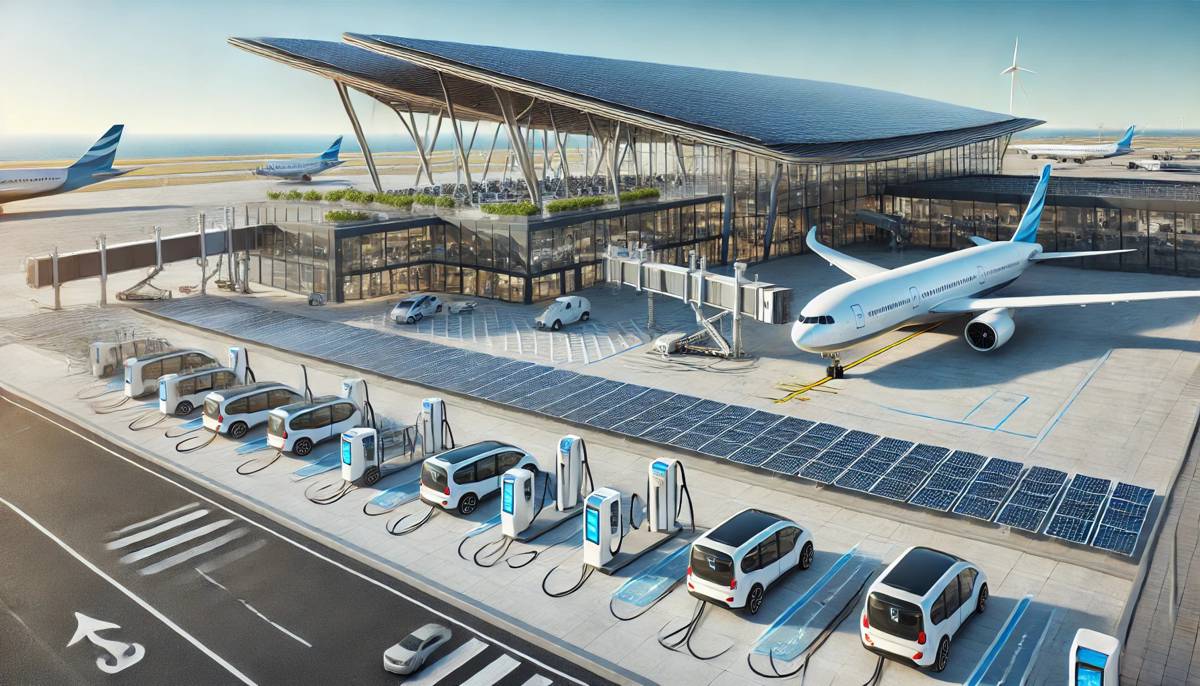EIB and ANA invest €50m to drive Sustainable Airports in Portugal
In a significant leap towards sustainable aviation, the European Investment Bank (EIB) and Aeroportos de Portugal (ANA) have cemented a €50 million finance contract aimed at reducing carbon emissions across nine airports in mainland Portugal and the Portuguese islands.
This collaboration, which falls squarely under the EIB’s climate action and environmental sustainability mandate, is not just a substantial investment but a bold statement about the future of airport infrastructure.
A Sustainable Vision for Portuguese Airports
The financial backing from the EIB is part of a larger €100 million sustainability initiative spearheaded by ANA, a subsidiary of VINCI Airports. The programme is meticulously designed to drive ANA’s ambitious goal of achieving carbon neutrality in its scope 1 and 2 emissions by 2030. This initiative also extends its benefits to the transition of ANA’s partners, fostering a broader industry shift towards greener practices.
But what does this really mean on the ground? For starters, the programme includes the implementation of state-of-the-art energy supply and air conditioning systems for aircraft while parked. By allowing planes to switch off their engines during ground operations, these systems significantly reduce fuel consumption and, by extension, harmful emissions. The project will also introduce an impressive number of electric charging points for ground vehicles, promising to overhaul the operational landscape of Portuguese airports.
With a clear focus on the future, the programme will cover around 135 aeroplane parking spots and will feature 600 charging points. In addition, seven photovoltaic projects, with a combined installed capacity of 12.8 MWp, will be rolled out across ANA’s airports. This initiative isn’t just about reducing emissions—it’s about setting a new standard in the aviation industry.
The EIB’s Role in Promoting Sustainable Transport
The EIB’s involvement in this project is not just financial; it is emblematic of the bank’s broader commitment to supporting projects that align with the European Union’s policy goals. EIB Director of Operations for Spain and Portugal, Gilles Badot, emphasised this point, stating: “This initiative is fully in line with the EIB’s commitment to support climate action and environmental sustainability. In addition to improving the operational resilience and safety of infrastructure in the Portuguese airport network, the project will make a major contribution to cutting carbon emissions.”
The project is also poised to receive support from the Connecting Europe Facility Transport Alternative Fuels Infrastructure Facility (CEF-T-AFIF). This additional backing underscores the significance of the project within the broader context of European Union initiatives aimed at creating a sustainable and smart mobility strategy, which is a cornerstone of the European Green Deal.
ANA’s Drive Towards Net-Zero
At the heart of this initiative is ANA’s unwavering commitment to sustainability. Thierry Ligonnière, ANA’s Chief Executive Officer, has been vocal about the company’s dedication to achieving net-zero emissions by 2030. He noted: “This initiative reinforces our net-zero commitment for 2030 at our airports, in areas 1 and 2, promoting the decarbonisation of the sector and positive mobility. At ANA and VINCI Airports, we are acting quickly with our partners to achieve the best environmental results.”
Ligonnière’s statement reflects a broader shift within the aviation industry, which is increasingly recognising the need to address its environmental impact. By investing in innovative technologies and sustainable practices, ANA is not only improving its own operations but is also setting a precedent for other airports around the world to follow.
A Broader Impact on the Aviation Industry
The significance of this project extends far beyond Portugal’s borders. The electrification of ground operations is widely regarded as one of the most effective strategies for reducing carbon emissions within the aviation sector. By replacing internal combustion engine vehicles and external power generators with sustainable alternatives, ANA is taking a giant step towards a greener future.
The aviation industry is one of the largest contributors to global carbon emissions, and as air travel continues to grow, the sector’s environmental impact is becoming increasingly unsustainable. Initiatives like ANA’s sustainability programme are crucial in mitigating this impact and ensuring that the aviation industry can continue to thrive in a world that is becoming ever more conscious of its environmental responsibilities.
Challenges and Opportunities Ahead
While the benefits of this project are clear, it is not without its challenges. Implementing such a large-scale transformation across multiple airports requires significant coordination and investment. The installation of new infrastructure, such as photovoltaic projects and electric charging points, is a complex process that requires careful planning and execution.
However, these challenges also present opportunities. By being at the forefront of sustainable airport infrastructure, ANA and its partners can position themselves as leaders in the industry. As more and more airports and airlines look to reduce their carbon footprints, the knowledge and expertise gained from this project will be invaluable.
Moreover, this initiative could pave the way for further innovations in airport infrastructure. As technologies continue to evolve, there will be new opportunities to reduce emissions and improve the sustainability of airport operations. By staying ahead of the curve, ANA can ensure that its airports are not just meeting today’s standards but are also prepared for the challenges of the future.
Building a Greener Future Together
In the grand scheme of things, this €50 million finance contract is a relatively small investment when compared to the enormous benefits it stands to deliver. By committing to this project, the EIB and ANA are not just making a statement about their dedication to sustainability—they are actively shaping the future of the aviation industry.
The collaboration between the EIB and ANA serves as a powerful example of what can be achieved when public and private entities work together towards a common goal. The success of this project could inspire similar initiatives across Europe and beyond, helping to accelerate the transition to a low-carbon economy.
As the world continues to grapple with the effects of climate change, it is clear that every industry must do its part to reduce emissions and protect the environment. The aviation sector is no exception, and with projects like this one, it is well on its way to a more sustainable future.
A Bright Horizon for Sustainable Aviation
As ANA and the EIB move forward with their ambitious plans, the impact of this project will be felt for years to come. The electrification of airport ground operations and the introduction of renewable energy sources represent significant steps towards a greener, more sustainable aviation industry.
With the backing of the EIB and the support of the Portuguese government, ANA is well-positioned to achieve its goal of carbon neutrality by 2030. And in doing so, it will set a new standard for airports around the world.
This project is not just about reducing emissions; it’s about creating a blueprint for the future of aviation. By investing in sustainable infrastructure today, ANA and its partners are ensuring that the airports of tomorrow are cleaner, greener, and more efficient than ever before.





















